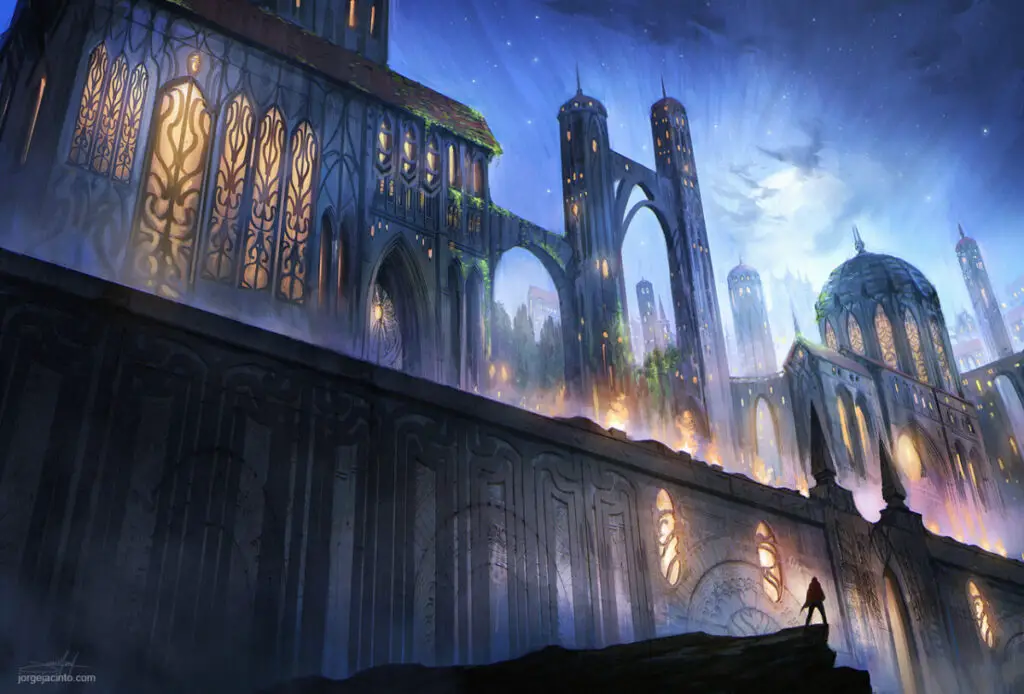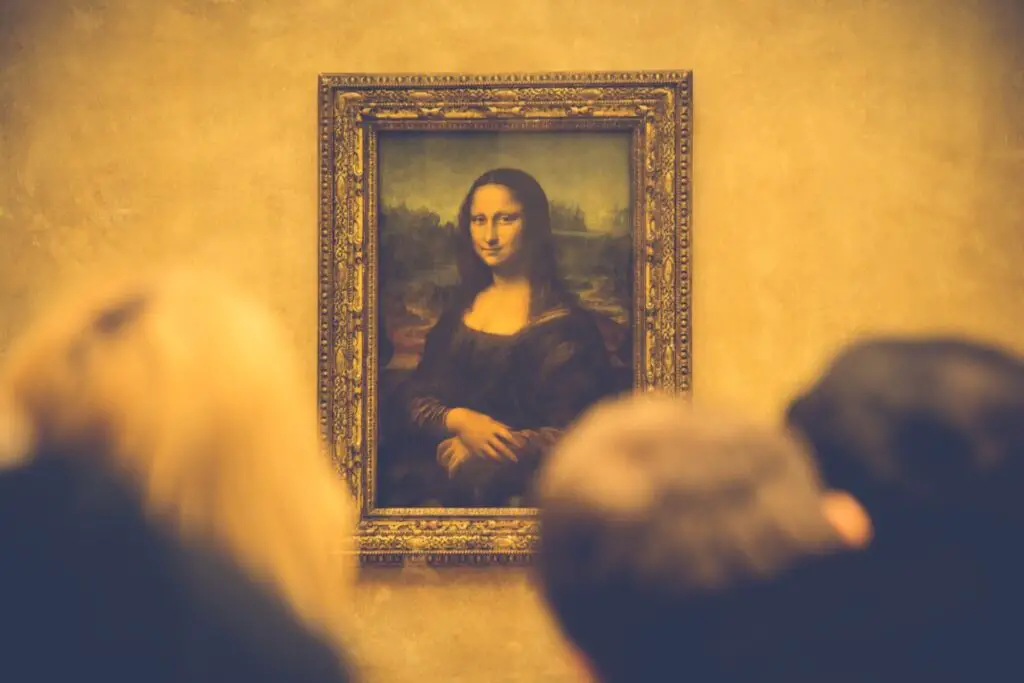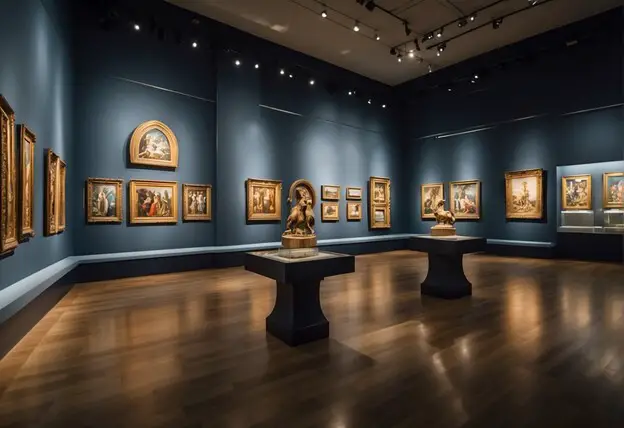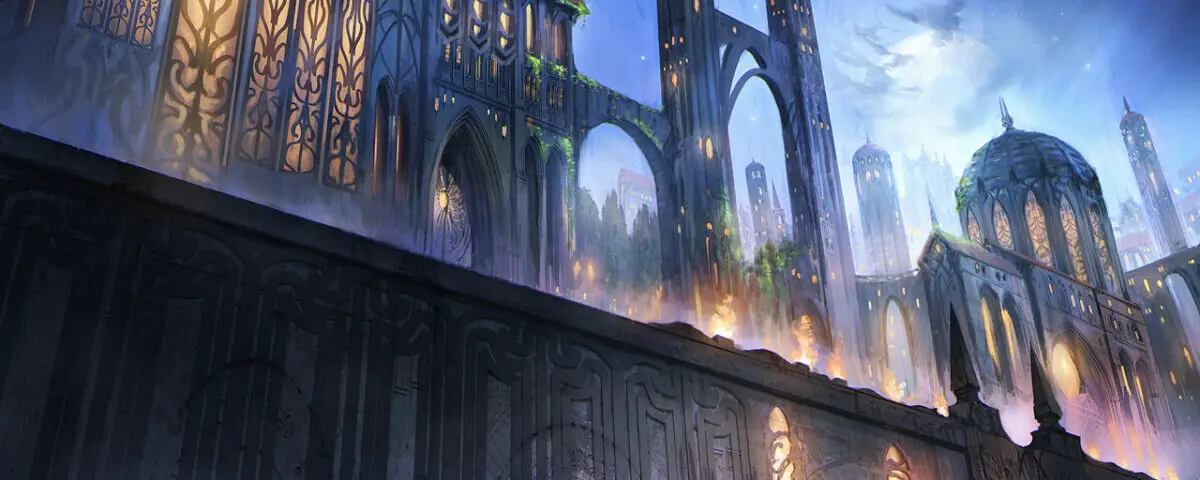Dive into the rich tapestry of human expression with the history of visual art. From ancient masterpieces to modern revolutions, explore the evolution of creativity in this captivating journey through time.
The journey through visual art history is a rich tapestry that documents an enduring need to create, express, and understand the world. From the earliest cave paintings to contemporary digital installations, visual arts have been a fundamental part of human culture for tens of thousands of years.
Art history explores the progression, delving into cultural, political, and social influences that have shaped artistic expression. The study of art history helps decode the visual language of the past and provides insights into the broader context of human history and society.
The history of visual arts spans Classical Antiquity to Modernism and Contemporary art. It showcases a dynamic evolution of creativity that reflects the spirit of each era. Art history employs methods to analyse, classify, and critique artworks. Thereby enabling our understanding of the intricate interplay between art, culture, and technology.
In a nutshell – learning to see and understanding visual fundamentals.

- Key Takeaways
- Visual art history illustrates the evolution of human creativity and aesthetics from prehistoric times to the present.
- Artistic movements and historical periods reveal the dynamic interplay between art and societal changes.
- The study of art history uses diverse methods to understand the influence and significance of art throughout humanity.
Visual Art History and Origins
Visual art history encompasses the development of art from ancient times, originating from the basic human instinct to create and represent one’s surroundings and experiences.
Prehistoric Visual Art
Prehistoric visual art is the earliest known form of art made by humans, dating back to the Upper Palaeolithic era. The art works often feature basic geometric patterns and shapes, using natural pigments and simple tools to create enduring images.
Cave Paintings and Petroglyphs
Cave paintings are vivid examples of early human creativity. Prehistoric humans used the walls of their dwellings to depict their lives and the world around them. The Lascauxand Chauvet caves in France house some of the most famous examples. They depict bison, horses, and other animals, and reveal artistic skill and a deep connection with the environment.
Ancient Figurines and Pottery
Beyond cave walls, ancient civilisations crafted figurines and pottery, adding a three-dimensional aspect to the art. The art often had societal significance, from religious to functional uses. Early pottery shows the advancement from utility to aesthetics. Items of beauty, adorned with intricate designs and patterns, often included representations of human figures.
Classical Antiquity
The epoch of Classical Antiquity was the cornerstone of Western tradition, characterised by the profound impact of Greek and Roman art. The period saw artistic standards and techniques established, that still influence the arts today.
Greek Art
Greek art arose in the 8th century BCE, with a focus on harmony, balance, and proportion. It progressed through the periods of:
- Geometric,
- Archaic,
- Classical, and
- Hellenistic
Each period was marked by distinctive styles in sculpture, pottery, and architecture. In particular, the Classical period (5th–4th centuries BCE), set ideals for beauty and realism which reverberated throughout later periods of art.
Roman Art
Roman art was deeply influenced by the Greeks. It is recognised for its practicality and emphasis on authority and citizenship. The Romans were skilled in engineering, which led to monumental architectural constructions such as the Colosseum.
They also excelled in portraiture, capturing character and individuality in their statues and busts. Roman frescoes and mosaics displayed intricate scenes, illustrating everyday life and mythological narratives.
Early Christian and Byzantine Art
Emerging from the 3rd century CE, Early Christian art intertwined with Roman styles, yet served different purposes. It focussed on religious themes rather than individual or civic achievements. Art was used to convey Christian doctrine, most notably through narrative frescoes and illuminated manuscripts.
The Byzantine Empire which succeeded Rome, preserved Classical traditions while developing a distinctive aesthetic from the 4th to the 15th centuries CE. Byzantine art was characterised by its symbolic and spiritual nature, using gold, mosaics, and icons. Its architecture, such as the Hagia Sophia, combines grand scales with domed roofs. And it set new standards in structural complexity and beauty.
History of Visual Arts: Medieval to Renaissance (1125 – 1500s)
Transitioning from the Medieval to the Renaissance period marked a significant development in art. Europe moved from the Gothic style, characterised by its grandeur and spirituality, to the rebirth of classical antiquity and humanism found in the Renaissance. The shift saw remarkable advancements in techniques, the flourishing of perspective, and greater appreciation for the natural world.
Gothic Art
Gothic art is the form that emerged in Europe during the late Middle Ages. It was predominantly associated with cathedral architecture, its pointed arches, ribbed vaults, and flying buttresses.
Giotto di Bondone, known simply as Giotto, was a key figure in transitioning painting during the Gothic period. He shifted towards a more life-like and naturalistic style, a precursor to Renaissance ideals. His frescoes in the Scrovegni Chapel are exemplary for their emotional expressiveness. They also laid the groundwork for future development.
Italian Renaissance
The Italian Renaissance was a golden era for the arts with an emphasis on harmony, proportion, and a human-centred worldview. Florence and Rome became the cradles of this cultural movement. They nurtured the exceptional talents of Leonardo da Vinci, Michelangelo, and Botticelli.

Da Vinci’s Mona Lisa and The Last Supper paintings represent the quintessence of Renaissance ideals, using:
- perspective,
- anatomy, and
- emotion.
Michelangelo’s sculptural works like the David and the Pieta, along with his Sistine Chapel ceiling paintings, demonstrate a mastery of the human form and a divine finesse. In parallel, Botticelli’s The Birth of Venus conveyed the Renaissance’s fascination with mythology, beauty, and poetic form.
Northern Renaissance
The Northern Renaissance extended the revival of classical themes and humanism beyond Italy, paying attention to detail and realism. In Flanders and the Netherlands, artists, Jan van Eyck and Albrecht Dürer mastered oil painting. They used meticulous textures and an incredible illusion of light. The Northern Renaissance embraced the proliferation of illuminated manuscripts. Religious texts were enriched with ornate decorations and illustrations. And they became treasured artefacts, symbolising the fusion of intellect, artistry, and faith.
18th to 19th Century Art Movements
The 18th to the 19th century was marked by profound shifts in art, as European societies underwent radical changes. Each movement reflected the zeitgeist, prioritising distinct aesthetics, themes, and philosophical underpinnings.
Baroque Art
Baroque art manifested from the early 17th century until the mid-18th century, characterised by drama, rich colour palettes, and intense light and shadow. It served, in part, as a response to the Protestant Reformation, with the Catholic Church commissioning works that were emotionally resonant and designed to inspire awe.
Rococo Style
The Rococo followed the Baroque period, arising in the early 18th century. Its style was ornate and delicately decorative, exemplified by light colours, asymmetrical designs, and curvaceous forms, often depicting scenes of love and leisure.
Neoclassicism
In the late 18th century, Neoclassicism emerged as a reaction against the Rococo’s frivolity, drawing inspiration from classical art and culture. It emphasised harmony, simplicity, and proportion, with themes centred around morality and patriotism.
Romanticism
As Neoclassicism waned, Romanticism gained prominence during the late 18th century, peaking in the mid-19th century. This movement prioritised emotion and individualism, focusing on nature, the sublime, and historical and mythological narratives.
Realism
In the mid-19th century, Realism appeared as a direct challenge to Romantic idealisation. It urged artists to depict subjects as they existed in ordinary life, without embellishment. It focused on the everyday life of common people and was often politically charged.
Modern Art Movements
The pantheon of modern art is characterised by its departure from classical representation and the embrace of innovative perspectives on form, colour, and technique. This section elucidates on key movements that have shaped the evolution of visual arts from the late 19th to the mid-20th century.
Impressionism
Marked by a radical departure from traditional art, impressionism prioritised the artist’s perception and immediate experience of light and colour over realism. Impressionism was pioneered by artists:
- Claude Monet, whose work ‘Impression, Sunrise’ gave the movement its name, and
- Pierre-Auguste Renoir.
It allowed for personal impressions and the effects of natural light to be depicted on canvas.
Post-Impressionism
Following Impressionism, Post-Impressionism emerged as a multifaceted movement distinguished by its focus on more symbolic content, formal order and structure. Artists, Paul Cézanne and Vincent van Gogh, pushed boundaries with their distinctive approaches to brushwork and colour that conveyed deep emotional resonance.
Cubism
Cubism, epitomised by Pablo Picasso and Georges Braque, deconstructed objects into abstracted forms, emphasising flat, two-dimensional surfaces. Breaking the convention of perspective in art, Cubism presented multiple viewpoints simultaneously, profoundly influencing the direction of modern art as seen in galleries like Britannica.
Surrealism
Delving into the unconscious mind, Surrealism combines elements of surprise and unexpected juxtapositions. Surrealist artworks, often infused with themes of dreams and the subconscious, were photographic in precision, producing startling images designed to disrupt rational thought. Salvador Dalí and René Magritte were notable proponents of the movement.
Expressionism and Fauvism
Expressionism and Fauvism underscored the expression of emotional experience over physical reality. Fauvism, with artists like Henri Matisse, used wild brush strokes and high-key colours, while German Expressionists sought to depict subjective emotions and responses to experiences and events.
Abstract Expressionism
Artists, Jackson Pollock and Mark Rothko championed a non-representational approach to art. And so, abstract expressionism surfaced in the hub of the art world, New York, post WWII. They focused on the medium and the act of painting itself by emphasising spontaneous subconscious creation.
Contemporary Art
Contemporary art reflects current trends and issues within society and stretches the boundaries of traditional media. It embodies a diverse range of styles and captures the complex nature of the present-day visual culture.
Pop Art and Minimalism
Pop Art emerged in the mid-20th century, characterised by vibrant aesthetics and inspiration from popular and commercial culture. Andy Warhol and Roy Lichtenstein drew on advertising and mass media, recontextualising everyday imagery to critique consumerism.
In contrast, Minimalism prioritised simplicity and focused on the medium and form. Artists Donald Judd and Frank Stella produced works with clean lines and basic geometric shapes, stripping art down to its bare essence.
Conceptual Art
Conceptual Art prioritises the idea over traditional aesthetics and materials. It gained traction in the 1960s and 1970s when artists Sol LeWitt and Joseph Kosuth challenged the idea of art as a tangible product. They emphasised the importance of the concept, making the artistic process and material outcome less significant.
Performance Art
What is Performance Art?
Performance art is a form of artistic expression that typically involves the live presence of the artist. It can be ephemeral and situational, addressing themes of identity, politics, and the human condition. And it may incorporate elements of visual art such as movement, gestures, speech, or other forms of interaction with an audience.
Marina Abramović (1946 – ) has been instrumental in advancing performance art.
A Hybrid of Performing Arts and Visual Arts
While performance art is distinct from traditional theatre or dance, it doesn’t neatly fit into the categories of either Performing Arts or Visual Art. It is a hybrid or interdisciplinary art form that blurs the boundaries between the artistic disciplines – performing arts and visual art. So, it exists at the intersection of both.
Performance art can be seen as a subset of the broader category of Visual Art because it involves visual elements, and the live act itself can be considered a visual spectacle. However, the temporal and performative nature of the art form also aligns it with aspects of the Performing Arts.
A Unique Medium
In essence, performance art is a unique and dynamic medium that draws on elements from Performing Arts and Visual Art. The interdisciplinary nature of performance art makes it a fascinating and diverse form of artistic expression.
We cannot classify it exclusively within one category, as it crosses two categories within James King Blog. So, for expedience we have included it in this section of the article posted under Visual Art.
New Media Art
New Media art is distinct from Performance art, although they are related genres within the broader field of contemporary art. While they share some similarities, they have key differences in terms of mediums, techniques, and focus.
The art form embraces the latest technological advancements in its creation, from video to internet-based projects, intertwining fine art with digital innovation to explore and critique contemporary visual culture.
Medium
New Media art uses digital technologies and new media platforms. This may include:
- video art,
- digital installations,
- interactive computer-based works,
- virtual reality, and
- other technology-driven forms.
Multimedia Elements
New Media art incorporates media and technologies to create immersive and interactive experiences. It may involve the use of;
- computers,
- sensors,
- screens, and
- other electronic devices.
Digital and Virtual
Unlike performance art, which relies on physical presence and live actions, New Media art explores the possibilities offered by digital and virtual realms.
Nam June Paik (1932 – 2006) was a prominent artist who advanced the conversation in new media art.
Forms of Visual Art across Different Cultures
Visual art is a testament to human creativity across different geographical regions and eras.
- Africa,
- Oceania,
- Asia, and
- the indigenous peoples of the Americas.
This section explores distinctive artistic expressions, each with its own form, function, and cultural significance.
African and Oceanic Art
African art is renowned for powerful sculptural forms, often created for religious and ceremonial purposes. The artworks are characterised by emphatic forms, bold designs, and vibrant colours. Oceanic art, from Melanesia, Polynesia, and Micronesia, encompasses a wide variety of art forms including masks, figures, and canoes that are bound to the community’s spiritual and social practices.
Asian Art
The vast Asian region includes several local art forms, such as East Asian calligraphy and ink painting, which focus on precision and simplicity. Traditional Chinese, Japanese, and Korean art incorporate themes from nature and philosophy, capturing landscapes and floral motifs with delicate brushwork. Additionally, religious sculptures and temple architecture demonstrate the influence Buddhism has across Asian cultures.
Indigenous Arts of the Americas
Andean civilisations have given us sophisticated pottery and textiles. The ancient Mayans and Aztecs left monumental stone carvings and city ruins. These indigenous art forms offer insights into a range of beliefs, social structures, and cosmologies.
The intricacy of native American beadwork and the sacred nature of totem poles exemplifies the rich artistic heritage of indigenous peoples of the Americas.
Humanity, Art and Society
Art profoundly reflects and influences different aspects of society. The interplay between visual arts and societal constructs helps to shape collective identity, express cultural values, and provoke public discourse.
Art and Religion
Religion has historically been a central theme in the arts and humanities, with visual representations serving as both storytelling vehicles and devotional icons. For example, stained glass windows in cathedrals depict biblical narratives, offering a visual experience while facilitating religious contemplation. The use of iconography across religions illustrates the intertwining of artistic forms and spiritual practices.
Art in Public Spaces

Public art transforms communal environments, making the visual arts accessible to the broader public outside museum walls. Sculptures in parks, murals on city buildings, and installations in public squares often reflect societal trends or memorialise significant events. They enhance the visual experience of shared spaces and invite viewers to engage with art as part of their daily lives.
Gender and Art
Discussions surrounding gender identity have permeated the visual arts, challenging traditional roles and highlighting underrepresented voices. Exhibitions focused on female artists or artworks that tackle themes of gender inequality illustrate the shifting attitudes in humanity and the arts. The dialogue reveals the biases and barriers within the art world, pushing for more equitable representation and appreciation of diverse perspectives.
Technical Evolution in Art
The technical evolution in art reflects a history of innovation where artists have adopted new materials and processes to express their visions. The progression shaped printmaking, photography, film, and computer art.
Printmaking and Photography
Printmaking evolved since the introduction of woodblock printing in the 9th century. In Europe, artists harnessed the technique for artistic purposes, particularly for the creation of intricate and reproducible images. The development of etching, engraving, and lithography allowed for greater detail and complexity in printed art.
Photography, emerging in the 19th century, revolutionised visual art. It could capture reality with precision, beginning with processes like the daguerreotype. Then it evolved through the development of roll film and digital photography. It is these advancements that made photography a ubiquitous and versatile form of artistic expression.
Film and Computer Art
Film
Movement was introduced into visual storytelling with the advent of film. The technical evolution allowed for ever more sophisticated cinematic experiences. It transitioned from silent, black and white scenes to complex colour films with sound. The innovations in special effects have further pushed the boundaries of what can be visually represented and communicated.
Computer
Computer art is a testament to how technology has expanded the possibilities within the arts. Early experiments in the 1960s quickly matured into a rich field that includes:
- digital painting,
- 3D modelling, and
- interactive installations.
Artists now use software and code to create works that challenge traditional forms in ceramics, textile arts, and other media. This digital landscape also encompasses virtual reality, marrying technology with immersive artistic experiences.
Methodology and Analysis in Art History
Art methodology uses techniques and approaches to analyse and critique art and design. The methods facilitate an understanding of individual works and the broader context within which art is created and received.
Iconography and Symbolism
Art historians dissect the layers of meaning in art through iconographic analysis. This process involves studying symbols, themes, and subject matter to uncover the intentions behind artistic practice. For example, the use of a skull in a painting might symbolise mortality, a commonly understood icon in Western art. Such analysis helps reveal the cultural and philosophical currents that shaped an artwork’s creation.
Art Criticism and Historiography
Criticism and historiography are crucial when studying art history.
- Criticism involves judging artistic value and technique, while
- historiography provides a chronological narrative, placing artworks in a historical context.
This dual approach helps art historians interpret art through evidence, such as:
- provenance and
- contemporaneous critiques.
Visual Analysis
A key tool for the examination of art and design, visual analysis, breaks down the formal elements of an artwork:
- line,
- colour,
- texture, and
- composition.
This form of analysis allows art historians to study the visual experience of an artwork objectively. And it provides insights into how a piece communicates and engages viewers. Techniques of visual analysis are vital for understanding the work’s structure. Also for extracting its intrinsic qualities beyond thematic interpretations.
By applying these methodologies, art historians bridge the gap between past artistic practice and contemporary critical study, ensuring that the discipline of art history evolves continuously.
Art Educational Institutions
Art educational institutions are vital when cultivating talent and scholarship in visual arts. They provide structured environments for learning and expression, often fostering the next generation of artists and art historians.
Art Schools
Art schools offer dedicated curricula focusing on various artistic disciplines, from painting and sculpture to digital arts. These institutions, such as the esteemed Rhode Island School of Design, provide a blend of studio practice and theoretical instruction, preparing students for professional careers in the arts.
- Curriculum: Programmes typically cover practical skills in fine arts, alongside art history and theory.
- Facilities: State-of-the-art studios and galleries allow for hands-on creation and exhibition.
- Breadth: Courses can range from undergraduate degrees to postgraduate research programmes.
Art schools also frequently collaborate with cultural organisations and industries, enhancing their relevance and impact within the broader art ecosystem.
Museums and Galleries
While museums and galleries may be best known for exhibition spaces, they also serve as educational institutions. The Metropolitan Museum of Art, for example, not only showcases art collections but also holds educational programmes for all ages, including talks, workshops, and guided tours.
- Public Programmes: offer lectures, classes, and interactive sessions to engage the community.
- Research: supports scholars and publishes significant academic work related to collections.
- Inclusivity: including diverse audiences make art accessible to a wider public.
These institutions are invaluable for both formal education and lifelong learning, continuing to play a significant role in the appreciation and study of art history.
Frequently Asked Questions
What are the predominant themes seen in historical paintings?
Historical paintings often depict religious, mythological, and everyday life themes. They serve as reflections of societal values, beliefs, and concerns of their time.
How have trends evolved within visual art?
Trends in visual art have evolved from idealised forms of ancient art to complex abstraction of modernism. Each period has introduced novel techniques and perspectives, leading to a rich tapestry of stylistic changes.
In what ways does visual art provide insight into cultural and historical contexts?
Visual art acts as a lens through which the narratives, ideologies, and aesthetics of different eras can be understood. Artistic expressions often capture the zeitgeist of an era, revealing insights into the cultural and historical milieu.
Why is the study of art history considered important to understanding visual culture?
Studying art history is crucial as it provides the framework for interpreting the visual language that shapes culture. It allows for an appreciation of artistic achievements and an understanding of how past innovations influence modern creativity.
How does art history as an academic subject unfold at the college level?
At the college level, art history typically encompasses a range of studies from foundational art history coursework to specialised topics. Students engage in historical research and critical analysis, preparing for careers in the arts or advanced academic pursuits.
Why not Join Us
If you enjoyed this article, we would like to offer you two gifts – our Starter Pack of 4 James King’s books and our Weekly Digest, which you can receive by email.

